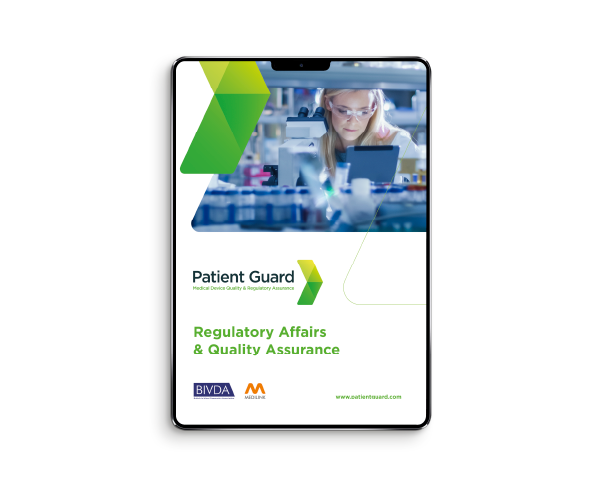Regulatory Requirements
Before a manufacturer can place their products on the EU or UK market, they must prove that they are in compliance with the medical device regulations. For CE marking manufacturers must be compliant with the Medical Device Regulation (EU) 2017/745, and for UKCA marking, compliance with the UK Medical Device Regulations 2002 (as amended). Within these regulations are specific requirements to perform clinical evaluation. In EU MDR 2017/745 this can be found within annex XIV and within the UK MDR 2002 clinical evaluation is described within Annex X of the Medical Device Directive 93/42/EEC.
Guidance Documents
Clinical Evaluation of medical devices within the context of the medical device regulations has often been confusing and left manufacturers unclear on what is expected from a regulatory perspective. Guidance documents have therefore been generated by regulatory bodies on what they interpret the medical device requirements are around clinical evaluation and how this should be presented for medical device manufacturers to show their medical devices are in compliance.
The main regulatory framework document currently used as guidance on how clinical evaluation should be performed remains MEDDEV 2.7/1 Revision 4. The MDCG (Medical Device Coordination Group) documents relating to guidelines around EU 2017/745 currently do not offer specific guidance on how to perform clinical evaluation but do give guidance around the subject.
Clinical Evaluation Plan
The starting point for clinical evaluation is the creation of a Clinical Evaluation Plan (CEP). The CEP establishes how a manufacturer will perform clinical evaluation. This includes how any scientific literature searches will take place and the methodology and research methods adopted to ensure that the clinical data being searched for follows a valid scientific method. The plan will set out the scope of the evaluation and determine what type of data will be used to perform clinical evaluation. It will identify the relevant regulatory requirements that are applicable to the device in demonstrating performance and safety.

What Data is used in Clinical Evaluation?
When trying to prove that a medical device is safe and performs as intended according to its clinical use, it is important to present the correct data. The data needed by medical device manufacturers should take the form of pre-clinical data, clinical data and risk management data.
Pre-Clinical Data
Pre-clinical data consists of the medical devices design history, manufacturing data, product, packaging, handling, transport, storage verification and usability data. This data should be based on compliance to harmonised or consensus standards where applicable and where no standards exist, the manufacturer should show robust methods that they have considered verification and validation approaches to prove the medical device meets its intended specification inputs.
Verification & Validation data
Verification validation activities should demonstrate that the design and manufacturing outputs meet the specified design and manufacturing inputs. It should show that the final finished medical device works as intended. It should show that it has been designed and manufactured inline with all the known and foreseeable risks from risk management activities and that the risks have been reduced to as low as possible (inline with ISO 14971 – medical device risk management standard). This approach should also be taken with packaging, sterility, software, electronics and so on (as applicable to the medical device – using consensus standards where necessary). The data should include a statistical approach to sample sizes etc., to ensure that it is repeatable data being generated when demonstrating device performance and safety.
Biological Evaluation
If a medical device has direct or indirect contact (such as a tube delivering a substance into the body). Then it must go through Biological Evaluation. This should be assessed on the finished manufactured medical device. This is an essential step as part of pre-clinical data. Biological evaluation should take place before any human trials or studies to demonstrate that the medical device has been assessed toxicologically.
Clinical Data
Clinical data is used to demonstrate that the clinical intended use of the device is ‘state of the art’, clinical data can be in the form of published clinical data from clinical trials on the device itself and/or from published clinical data on similar devices already on the market. Clinical data from peer reviewed journals can also be used for understanding the clinical background the device is being used for, and how use of the medical device may benefit the user/patient with those clinical conditions the device is intended for.
Clinical Trials/Clinical Studies
For medical devices that are completely novel or legacy devices that are being used within a new intended use for which there is no clinical history, it is usually expected that these devices undergo clinical trials to generate supporting clinical evidence that the intended use meets the ‘state of the art’.
Published Clinical data
Published Clinical data relating to safety, performance, clinical background should be identified using established research methods and notable sources for example PUBMED, Cochrane Library, and other notable sources for peer reviewed published clinical literature.
Un-published Clinical data
The medical device manufacturer may use data from clinical trials on the device itself that have not been published as evidence that the device is safe and effective.
Risk Management Data
The clinical evaluation should include data from the risk management activities that have been performed by the manufacturer in evaluating all the possible known and foreseeable risk associated with the medical device.
Do you need Clinical Evaluation Support?
Useful Resources
Other related Articles
Who should perform Clinical Evaluation?
Clinical Evaluation should take a multidisciplinary team approach. With experts relating to the clinical indication that the device is being used for, medical device experts with knowledge about the medical device and regulatory experts with knowledge about what evidence is needed and how it should be presented.
Clinical Experts
The clinical evaluation team should include experts with experience and knowledge specific to the clinical intended use and clinical background.
Medical Device Experts
The clinical evaluation team should include experts with knowledge about the medical device itself, such as the design and development team, quality engineers.
Regulatory Experts
The team should also include expertise from regulatory professionals who can advise on the regulatory requirements, standards, guidance documents, clinical /medical writing etc.
Clinical Evaluation Report
Once all the data has been assessed and critically reviewed it should be presented in the form of a Clinical Evaluation Report (CER). The report should be a critical analysis of all the supporting pre-clinical and clinical data generated to support that the benefit of using the medical device out weighs the risks of using the medical device when considering its intended use.
The CER should be presented following the regulatory guidance documents such as MEDDEV 2.7/1 Revision 4 and the MDCG documents discussed earlier. This is to ensure that clinical evaluation data and opinions are presented in a uniformed way for assessment by Notified Bodies or Regulatory Authorities.
It is important to remember that the Notified Body may use several members of their team when assessing your medical device technical documentation, so the person assessing the CER might not be the same person assessing the other technical aspects of the Medical Device File. Therefore, it is really important to present full summary data in the CER and not just a reference to another section of the Medical Device File (Technical File).
Post Market Clinical Evaluation
Clinical Evaluation is not a one time event. The initial clinical evaluation should be for the purposes of gaining CE marking or UKCA marking for the medical device. Once the device has been placed on the market, clinical evaluation should take place again at regular intervals depending on the risk level of the medical device. Often a 2 year timeframe is used as a yard stick for performing clinical evaluation and updating clinical evaluation reports. The updated clinical evaluation should include an assessment of any new clinical data that has been generated since the last report. It should include information gathered through PMS activities and from any PMCF data generated.
Post Market Surveillance (PMS)
Manufacturers should generate a PMS Report or PSUR every year depending on the class of medical device being placed on the market. Class I medical device manufacturers need to write PMS reports and Class IIa upwards medical device manufacturers need to write PSUR reports. This data should be summarised in the updated clinical evaluation report.
Post Market Clinical Follow-up (PMCF)
Medical Device Manufacturers need to perform PMCF in addition to PMS activities. PMCF is used to gather real world clinical data from users of the devices. Each year the medical device manufacturer should write PMCF reports which looks at this data and how their medical devices are being used in the field. The information produced in these reports should also be summarised within the updated clinical evaluation reports.



